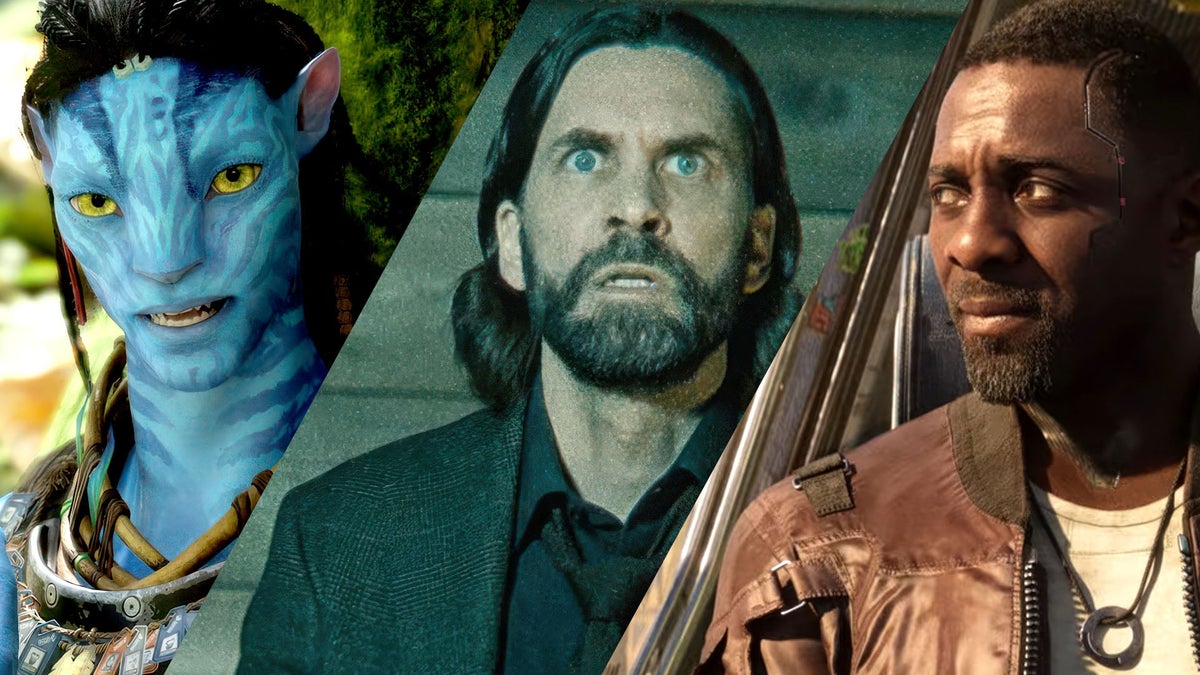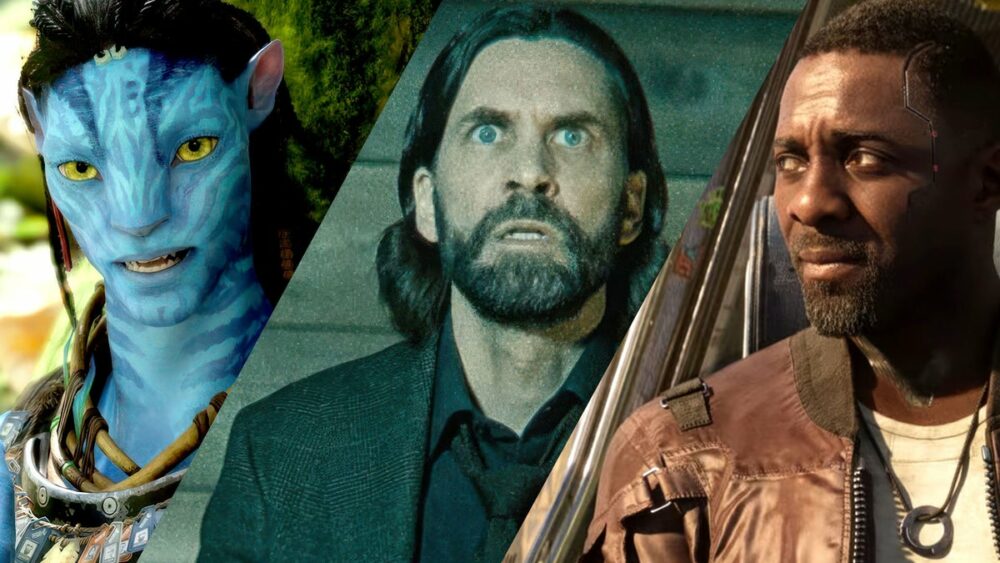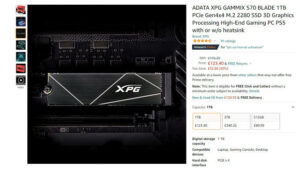
Recently the Digital Foundry team met up online to discuss the best game graphics of 2023, with Alex Battaglia, John Linneman and Oliver Mackenzie nominating their favourite titles. What struck me about the list – reproduced in full at the end of the article – was how many titles weren’t those that were pushing the absolute boundaries of graphics technology in terms of features. Instead, the games chosen – and especially the highest ranking options – were those that were smartly designed to both serve gameplay and take full advantage of the (often limited) hardware they were running on.
Hi-Fi Rush and Super Mario Bros. Wonder are perfect examples of this, I feel. Both games were first-party releases that distinguish themselves with a bold, consistent sense of style, with colourful and imaginative environments populated by characters with exaggerated movement that emphasises particular poses. In Hi-Fi Rush in particular, this is heightened further by the cel-shaded appearance and decimated animation “on twos” that makes the game feel like a playable cartoon.
In both cases, the graphics and animation styles chosen serve the gameplay beautifully, with responsive controls and a living, breathing world that reacts to your actions, whether it’s enemy and flower reactions in Super Mario Bros. Wonder or the world gently vibing along with the music in Hi-Fi Rush.
And despite shipping on two of the most constrained platforms in terms of available horsepower – the Xbox Series S and Nintendo Switch – both games hit their performance targets, allowing for consistently responsive gameplay in a way that many console releases didn’t manage – especially on Switch, which this year saw a number of perhaps over-ambitious releases. More importantly, these two titles achieved this without relying too heavily on image reconstruction techniques to counteract a low base resolution, a technique that was used more heavily in 2023 on all platforms – and one that left many console releases severely lacking in terms of sharpness and overall image quality.
The top three slots on our list this year went to Cyberpunk 2077 with RT Overdrive, Avatar: Frontiers of Pandora and Alan Wake 2. All these games combine stylish and performant graphics with genuinely boundary-pushing ray tracing techniques, with two of the three supporting full path tracing on PC – essentially wholly replacing the faked lighting systems used for years in rasterised titles with a realistic alternative that “just works”.
Even at the start of 2023 I wouldn’t have expected so many AAA games to be upgraded with path tracing so successfully, as the impressive path-traced retro remakes we’ve seen on PC over the past few years still came with massive performance concerns. Clearly, enterprising developers and graphics card makers have made a huge amount of progress here, and that’s worth celebrating. I feel like game studios have also gotten better at making these RT upgrades more obviously good-looking, in comparison to early efforts that often tanked performance with only subtle fidelity improvements.
When used correctly, these RT and PT techniques can also act as a force multiplier, letting smaller studios deliver a great-looking game without requiring a massive technical and art staff, eg by eliminating the need to manually place extra lights in a scene to get a desired look. We saw a similar effect in another top 10 pick, RoboCop: Rogue City, which used Unreal Engine 5 features Lumen, Nanite and VSMs (virtual shadowmaps) to produce incredibly realistic looking environments packed with detail on a AA budget.
As we look into 2024, I hope other developers and publishers are learning lessons from the technical successes – and failures – of 2023. The best games of the year from my point of view were the ones that had the time to mature, that chose graphics techniques and technologies wisely to serve gameplay and hit performance targets, rather than the other way around.
None of these decisions are obvious or easy, especially in the midst of development, but there are at least some indications that studios are moving in the right direction. After all, the end of 2023 certainly saw more technical competence (and excellence) than the beginning and middle of the year. With luck, we’ll see that trend continue next year, and maybe even some new consoles and graphics hardware to keep things interesting…
- SEO Powered Content & PR Distribution. Get Amplified Today.
- PlatoData.Network Vertical Generative Ai. Empower Yourself. Access Here.
- PlatoAiStream. Web3 Intelligence. Knowledge Amplified. Access Here.
- PlatoESG. Carbon, CleanTech, Energy, Environment, Solar, Waste Management. Access Here.
- PlatoHealth. Biotech and Clinical Trials Intelligence. Access Here.
- Source: https://www.eurogamer.net/digitalfoundry-2023-best-graphics-of-the-year-2023-digital-foundrys-top-games
- 10
- 2023
- 2024
- 7
- a
- AAA
- About
- Absolute
- achieved
- act
- actions
- ADvantage
- after
- Alan
- alan wake
- Alan Wake 2
- alex
- All
- Allowing
- along
- also
- alternative
- amount
- and
- Animation
- Another
- ARE
- around
- Art
- article
- as
- At
- available
- avatar
- Avatar: Frontiers of Pandora
- base
- BE
- beautifully
- beginning
- BEST
- Best Games
- Better
- bold
- both
- boundaries
- breathing
- budget
- but
- by
- came
- CAN
- card
- cases
- Celebrating
- certainly
- characters
- chose
- chosen
- City
- clearly
- combine
- comparison
- concerns
- consistent
- consistently
- Console
- Consoles
- content
- continue
- controls
- cookie
- cookies
- correctly
- counteract
- Cyberpunk
- Cyberpunk 2077
- decisions
- deliver
- designed
- desired
- despite
- detail
- developers
- Development
- didn
- digital
- Digital Foundry
- direction
- discuss
- discussion
- Early
- easy
- Effect
- efforts
- EG
- eliminating
- enable
- end
- engine
- environments
- especially
- Essentially
- Eurogamer
- even
- Examples
- excellence
- expected
- extra
- failures
- Features
- featuring
- feel
- few
- fidelity
- flower
- For
- force
- from
- frontiers
- full
- further
- game
- gameplay
- Games
- GDPR
- genuinely
- Get
- graphics
- had
- Hardware
- Have
- heavily
- here
- highest
- HIT
- hope
- hosted
- How
- HTTPS
- huge
- i
- image
- importantly
- impressive
- improvements
- in
- incredibly
- instead
- interesting
- into
- Is
- IT
- ITS
- john
- just
- keep
- learning
- least
- left
- lessons
- Lighting
- like
- Limited
- List
- living
- ll
- Look
- looking
- Low
- Luck
- Lumen
- made
- makers
- MAKES
- Making
- manage
- manually
- many
- Mario
- massive
- mature
- maybe
- me
- Message
- met
- Middle
- more
- most
- movement
- moving
- Music
- my
- Nanite
- need
- New
- Next
- Nintendo
- Nintendo Switch
- None
- number
- obvious.
- Obviously
- of
- often
- oliver
- on
- One
- ones
- online
- only
- Options
- or
- Other
- our
- over
- overall
- Packed
- Pandora
- particular
- Past
- path
- PC
- perfect
- performance
- perhaps
- pick
- place
- Platforms
- plato
- plato data intelligence
- platodata
- platogaming
- please
- Point
- Point of View
- poses
- Produce
- Progress
- PT
- publishers
- pushing
- quality
- ranking
- Ranks
- rather
- ray
- reactions
- realistic
- recently
- Releases
- relying
- remakes
- resolution
- responsive
- Retro
- right
- Rogue
- rt
- running
- rush
- s
- saw
- scene
- see
- seen
- sense
- Series
- serve
- settings
- severely
- Shipping
- similar
- Slots
- smaller
- So
- some
- staff
- start
- still
- style
- Styles
- successes
- successfully
- super
- Super Mario
- supporting
- Switch
- Systems
- Take
- targeting
- targets
- Team
- Technical
- technique
- techniques
- Technologies
- Technology
- terms
- than
- that
- The
- The Game
- the world
- their
- themselves
- there
- These
- they
- things
- this
- those
- three
- time
- titles
- to
- too
- top
- Tracing
- trend
- two
- Unreal
- unreal engine
- Unreal Engine 5
- up
- upgraded
- upgrades
- used
- ve
- View
- Virtual
- wake
- was
- way
- we
- went
- were
- What
- when
- whether
- wholly
- window
- wisely
- with
- without
- wonder
- works
- world
- worth
- wouldn
- xbox
- xbox series
- Xbox Series S
- year
- years
- your
- youtube
- zephyrnet












